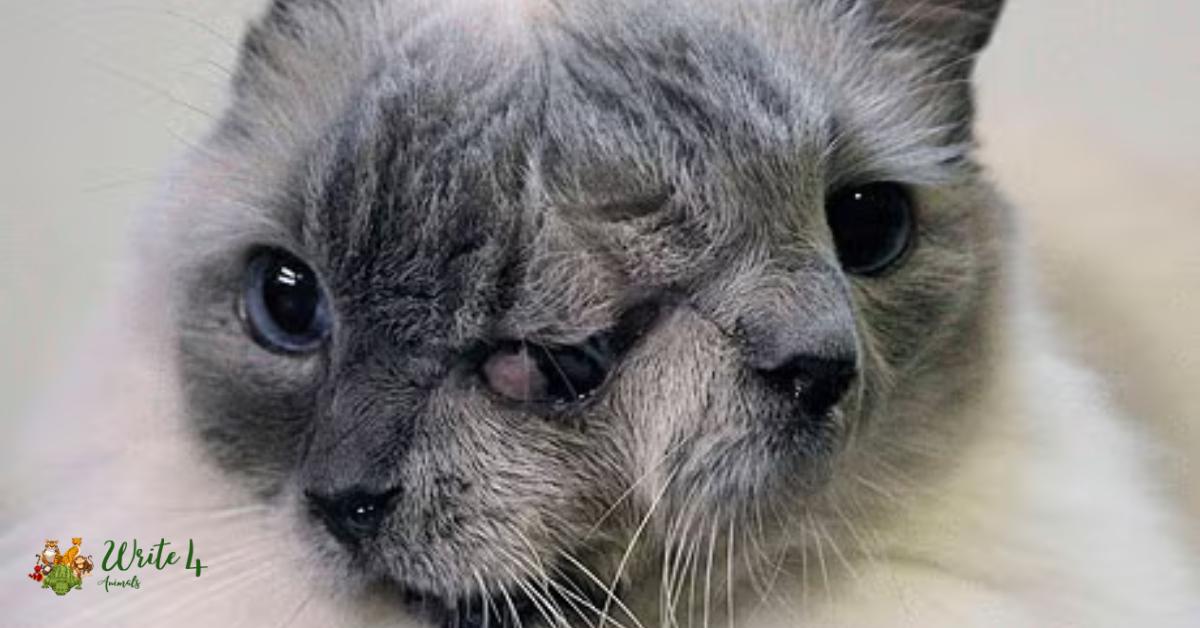In the vast tapestry of the animal kingdom, nature sometimes paints with unexpected strokes, creating creatures that defy our expectations and challenge our perceptions.
These anomalies, often referred to as “deformed animals,” captivate our curiosity and spark profound questions about the mysteries of biology and evolution. In this comprehensive exploration, we delve into the extraordinary world of the top 12 deformed animals, each offering a unique glimpse into the complexities of life on Earth.
Top 12 Deformed Animals
1. Two-Headed Snakes
One of the most mesmerizing anomalies in the reptile realm is the two-headed snake. These serpents, adorned with dual sets of piercing eyes and flickering tongues, are the result of a rare embryonic anomaly known as polycephaly.

Despite their unusual appearance, two-headed snakes can survive in captivity, although they may face challenges in coordinating their movements due to the independent functioning of each head.
2. Cyclopia in Cyclops Kittens
Cyclopia, a congenital disorder characterized by the development of a single, centrally located eye, occasionally manifests in newborn kittens, giving rise to the mythical “Cyclops” feline.

While these kittens rarely survive beyond infancy due to severe neurological abnormalities, their striking appearance serves as a poignant reminder of the intricate genetic dance that shapes life’s diversity.
3. Conjoined Twin Turtles
Conjoined twins, a rare occurrence in the animal kingdom, have been documented in various species, including turtles. These fascinating anomalies result from incomplete separation of embryos during development, leading to the fusion of two individuals into a single entity.

While conjoined twin turtles may face mobility and survival challenges in the wild, their resilience and adaptability in captivity offer valuable insights into the intricacies of developmental biology.
4. Polydactyl Cats
Polydactyly, the presence of additional digits on the limbs, is a relatively common genetic trait observed in various cat breeds. These “Hemingway cats,” named after the prolific writer Ernest Hemingway, who famously adored them, boast an extra set of toes that endow them with a distinctive and endearing appearance.

Despite their unconventional paw structure, polydactyl cats exhibit normal mobility and behavior, charming their human companions with their unique quirks.
5. Albinism in White Lions
Albinism, a genetic condition characterized by the absence of melanin pigment, occasionally manifests in lions, resulting in the stunning phenomenon of white lions.

These ethereal creatures, revered in certain cultures as symbols of purity and divinity, face heightened vulnerability in the wild due to their conspicuous coloration and compromised camouflage. Through conservation initiatives and captive breeding programs, efforts are underway to protect and preserve these majestic predators.
6. Bicephalic Sheep
Bicephaly, the presence of two heads on a single body, can occur in sheep as a rare developmental anomaly. These extraordinary creatures, with their dual sets of eyes and mouths, evoke wonder and astonishment among those who encounter them.

While bicephalic sheep may encounter challenges in coordination and feeding, their resilience in adapting to their condition underscores the remarkable capacity of animals to thrive in diverse circumstances.
7. Merle Pattern in Dogs
The merle pattern, characterized by patches of diluted pigment interspersed with darker areas, is a striking coat variation observed in several dog breeds, including Australian Shepherds and Collies. While aesthetically appealing, merle-patterned dogs may be prone to certain health issues, such as deafness and vision impairment, associated with the merle gene.

Responsible breeding practices and genetic screening help mitigate the risk of these conditions, ensuring the well-being of these beloved canine companions.
8. Axolotl Ambystoma mexicanum
The axolotl, a fascinating amphibian native to Mexico, possesses the remarkable ability to regenerate lost limbs and organs, making it a subject of intense scientific interest.

However, certain genetic mutations can give rise to deformities in axolotls, such as missing limbs or abnormal growths. Despite these anomalies, axolotls thrive in captivity, captivating enthusiasts with their otherworldly beauty and regenerative prowess.
9. Geep (Goat-Sheep Hybrid)
The geep, a rare hybrid offspring resulting from the mating of a goat and a sheep, challenges conventional boundaries of species classification. These interspecies hybrids, also known as “chimeras,” exhibit a blend of characteristics from both parental species, sparking debate and intrigue within the scientific community.

While geeps are sterile and cannot reproduce, they serve as a testament to the fluidity of genetic barriers and the potential for unexpected unions in the natural world.
10. Janus Cats
Janus cats, named after the Roman god with two faces, are felines born with craniofacial duplications, resulting in the formation of two distinct faces on a single head.

These captivating creatures, with their mesmerizing dual visages, inspire awe and wonder, challenging our perceptions of normalcy and beauty. While Janus cats face significant health challenges and often have shortened lifespans, their unique existence serves as a poignant reminder of the boundless creativity of nature.
Conclusion
In the realm of nature’s anomalies, diversity knows no bounds, and every aberration offers a glimpse into the infinite possibilities of life’s tapestry. From two-headed serpents to dual-faced felines, the top 12 deformed animals showcase the wondrous array of forms and adaptations that define the animal kingdom.
As stewards of this diverse planet, it is our responsibility to cherish and protect these extraordinary creatures, celebrating their resilience and embracing the beauty of their uniqueness in the mosaic of life.
Recommended
1. 10 Animals in Cuba | animals found in cuba
